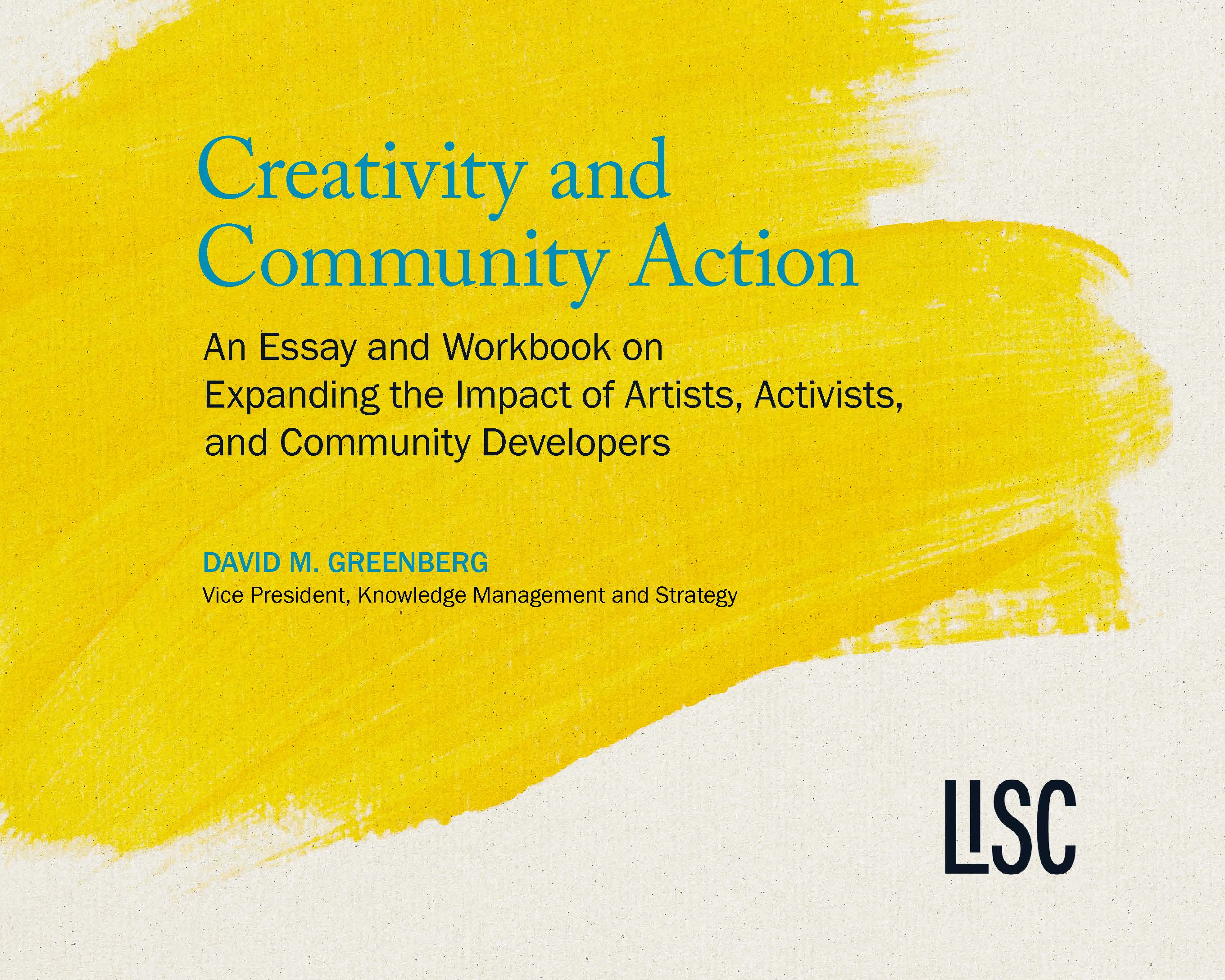Creativity and Community Action
In a new essay and workbook from David M. Greenberg, LISC's vice president for Knowledge Management and Strategy, practitioners are posed with two parallel questions: how can community development and activism enhance artistic and cultural work? And how can cultural practice community development and activism? Using paintings, poetry, and the work of artist-activists in Logan Square, Chicago, as “cases,” the resource helps enhance the reach, ambition, and impact of collaborations between artists and community organizations.
Introduction
It is widely observed that creative placemaking has a measurement problem,1 but it is important to identify that the problem stems from fundamental questions about what art and community development can accomplish together. Some methodologically rigorous studies have examined art’s role in catalyzing community change, but they may conceptualize art as a cultural amenity that can lead to gentrification, because the impact that is captured is more likely driven by population change than by the redistribution of resources.2 Others view it as self-evident that art promotes equity, by measuring creative expression as a good in itself, separate from real-world action and change.3
The purpose of this essay is to provide a conceptual and practical framework for artists, activists, and community developers interested in collaborating to achieve more equitable and inclusive community outcomes. While many research studies have asked how art can enhance community development’s reach, ambition, and impact,4 it is also important to ask the opposite question—how can community development and community activism enhance the reach, ambition, and impact of artistic and cultural practices? How can collaborations between artists and activists result in more creative community development, and also in more powerful art?
Culture-makers who collaborate with activists and community developers can create art that is better poised to illuminate social problems through the eyes of those who seek to change them— art, in other words, that communicates more powerfully a sense of care and agency. These collaborations can spark work that resists harmful narratives about communities, embraces their complexity, and develops a more grounded sense of their possibility. This happens through increasing the reach of culture work, the power of its reception, and through these means, its impact in contributing to cultural change
In turn, activists and community developers who collaborate with artists can expand their reach—expanding the number of residents and organizations with which they are in more authentic relation. Collaborations can expand the power of these relationships by deepening commitments of organizations and individuals to each other. And through these means, they can enhance the impact of activism and community development.
This essay first imagines the contributions of community action to art through two parables—close readings of a poem and a painting that represent public housing transformation in Chicago. It “reads” Ed Roberson’s poetry and Kerry James Marshall’s paintings to understand how their art is more agentic and more powerful because it genuinely engages history and community. The essay then explores a case study of the contributions of art to community action, examining the artistic and activist practices of Chicago’s Logan Square Neighborhood Association (LSNA)—how LSNA leaders enhanced their impact by integrating creative and cultural activities with their immigrant defense and economic justice work.
It then ends with a series of simple questions that artists and community developers may ask of each other as they collaborate. These questions are meant to measure the “value-add” (to use a not very artistic term) that artists and community developers offer to each other.
Download the full white paper [+]...
[1] Jackson, M. R., Herranz, J., & Kabwasa-Green, F. (2003). Art and culture in communities: a framework for measurement. Washington, DC: Urban Institute.
[2] Early in the field’s development, the National Endowment for the Arts launched efforts to create indicators from secondary data sources such as the American Community Survey, using the Urban Institute’s Validating Arts and Livability Indicators (VALI) Study. Other examples include Stern, M.J. (2014). Measuring the outcomes of creative placemaking. In The role of artists & the arts in creative placemaking, May 30-31, 2014, Baltimore, MD—symposium report (pp. 84-97). Washington, DC: Goethe-Institut and EUNIC. That study looked at the correlations between community change in Philadelphia and the presence of cultural assets.
[3] For example, some prominent funders emphasized early in the development of the field that the impact of creative placemaking or placekeeping was to “connect, engage, and listen,” or to allow the community to “narrate itself.”
[4] See for example the framing of the 2019 issue of Community Development Innovation Review
Blog: More Creative Community Development. More Powerful Art.
David Greenberg, LISC’s VP for Knowledge Management and Strategy, and author of a new essay and workbook exploring the relationships between art and community development, poses a question to our field: what happens when we dispense with our outmoded silos and allow culture-making and social activism to graft? The possibilities are limitless and liberating.
